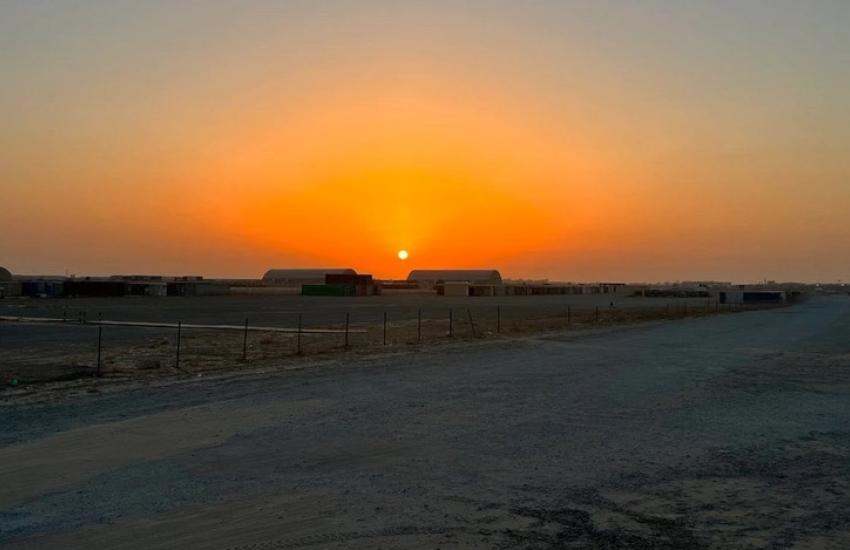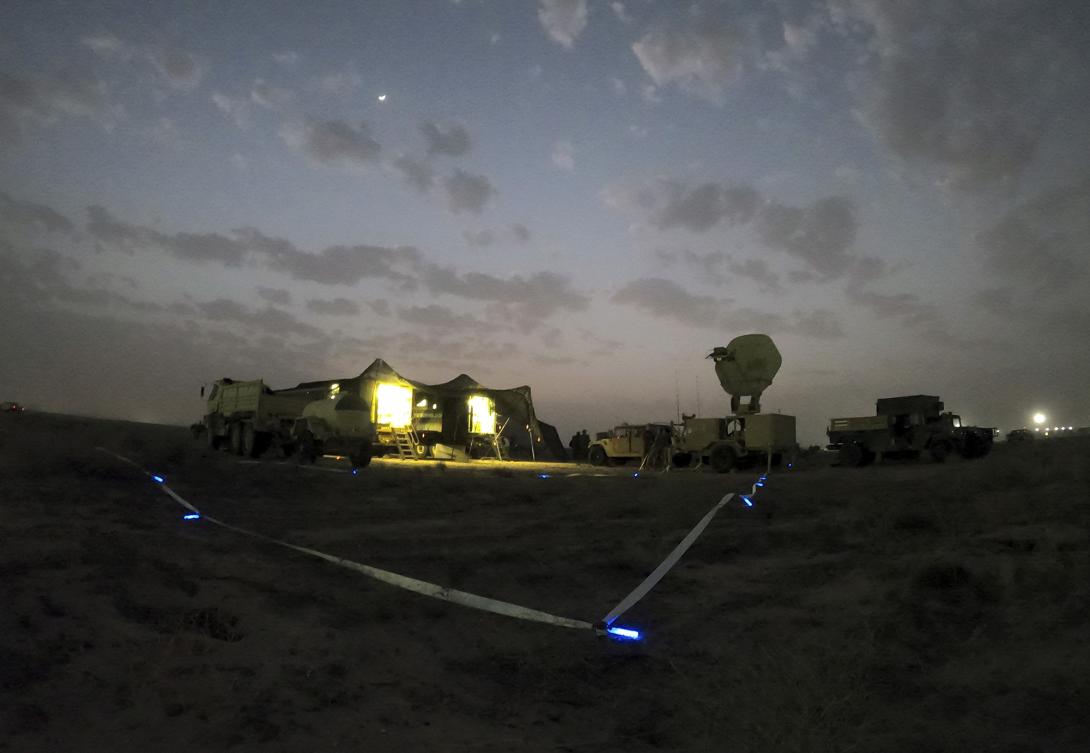Modernized Networks Allow C2 From Afar in Southwest Asia
Recently updated networks at U.S. Army Central’s headquarters in South Carolina and Camp Arifjan, Kuwait, provide the secure and resilient communications needed to command forward forces from the United States, Army officials say.
In November, the GENM-O product office completed two projects for Army Central, or USARCENT, aimed at achieving its vision for multidomain operations by 2028. Also known as the Third Army, which was once commanded by Gen. George Patton, USARCENT provides command and control, rapid force projection and sustainment as part of a multinational force to deter malign influence, violent extremist organizations and state adversaries across the theater. Camp Arifjan serves as a forward installation for joint U.S. military personnel along with forces from Australia, Canada, Poland, Romania and the United Kingdom.
GENM-O is an acronym within an acronym: Global Enterprise Network Modernization-OCONUS, or outside the continental United States. GENM-O provides network and infrastructure modernization in the Europe, Pacific and Southwest Asia theaters.
The primary objective synchronizes multiple modernization efforts: the Secret Internet Protocol Router Network (SIPRNet); the Non-classified Internet Protocol Router Network (NIPRNet); and the Mission Partner Environment—Information System architecture to improve network readiness, standardization, interoperability, cybersecurity built on zero-trust principles and 5G cellular networks to complement network consolidation, the Army fact sheet explains.
“These upgrades empower the warfighters with reliable, secure and efficient communication. A lot of the network infrastructure was upgraded so that you could enhance interoperability between the coordination forces and the folks on the ground,” said Marilyn Mitchell, the GENM-O assistant project manager who led the USARCENT effort. “There are areas in Kuwait, like Camp Arifjan, that are all interconnected now, interconnected with each other.”
The effort falls under the Program Executive Office-Command, Control, Communications-Tactical, and the work supports the Army’s network modernization strategy and unified network plan. The service’s effort to establish a single, unified network is intended to transform Army capabilities to support data-centric, multidomain operations due to the return of near-peer competition and the Army’s need to compete and potentially fight in large-scale combat operations against any adversary, an Army article explains.
Business Mission Edge, or BME, was the contractor for the effort at Shaw Air Force Base, while Tyto Athene provided outside infrastructure in Kuwait.
Similar efforts are underway at Army commands in Africa, Europe, the Indo-Pacific and the continental United States.
Military modernization discussions often highlight the need for artificial intelligence, robotics and other seemingly futuristic technologies, and Mitchell indicated the upgrades to the network infrastructure allow 5G, Internet of Things and edge computing capabilities. But seemingly mundane routers, switches and fiber optic cables also are critical in this early modernization phase.
“We went in and provided several enhancements to their local network. It enhances their ability to communicate classified and unclassified—all of the voice, data transmission and things of that nature,” Mitchell offered. “But it also helps them to collaborate across different platforms because their area of operations is throughout the Middle East. These guys need to be able to communicate with each other on a consistent basis for the mission in that region.”
The effort in Kuwait provided multiple communication pathways and hardened the infrastructure by burying cables encased in cement. “It will allow us to communicate no matter what occurs. “If, God forbid, there’s a missile strike, communications could continue,” Mitchell said.

USARCENT moved its headquarters to Shaw Air Force Base from Fort McPherson, Georgia, in 2011 during a base realignment and closure. “The bulk of that headquarters is sitting at Shaw Air Force Base. They’re commanding and controlling from afar, so they need to have extremely reliable and secure locations to provide that support to the forward elements and make sure information is flowing in a timely fashion so that they can meet the demand for the mission,” said Scott Ervin, the GENM-O Southwest Asia theater director.
The headquarters went for more than a decade without a “technical refresh” to its networks, which led to equipment reaching end-of-life and end-of-service status, “exposing the network and data to security vulnerabilities resulting in periodic loss of network availability,” according to an Army fact sheet provided to SIGNAL Media. “Because they’re sitting on an Air Force installation, I think they got overlooked a few times, but also, there were some anomalies with the funding,” Ervin reported. He added that the headquarters once received overseas contingency operation funding but became no longer eligible.
Ervin equated the new network infrastructure to an information superhighway. “We are responsible for building the superhighway infrastructure if you will, that will allow the Army to achieve multidomain operations, hopefully in the relatively near future. We are basically building the transport layer for all of the terrestrial communications, the campus area network inside of the military installation, and then, in some cases, interconnections between installations. That’s a vital component in achieving multidomain operations.”
Both Mitchell and Ervin noted that the older network infrastructure resulted in sluggish and unreliable communication. “If a soldier goes in, turns on his computer, he’s waiting, waiting, waiting, five minutes for his computer to boot up. Or, they may be in the middle of a conference call, a video call, and that call drops,” Mitchell said. “He wants to get on the computer, log in and get right to work, so that’s what we did at Shaw. We increased the virtual events operation, increased the speed.”
Ervin agreed, reporting that the main command post at Shaw Air Force Base experienced “network outages on a regular basis” before the GENM-O upgrades but has not “had any significant unplanned outages since we did the upgrade.”
He noted that the GENM-O team also is adopting technologies from the National Security Agency’s Commercial Solutions for Classified program, which aims to rapidly deliver commercial cybersecurity solutions. “We’re trying to move towards Commercial Solutions for Classified, adopting technologies that have existed for probably at least 10 years now but are starting to mature more and more in the Army. Right now, within GENM-O, we have a program called the Global Secure Network. The Army is trying to find a way to modernize that infrastructure so they can also extend it over unclassified means, if you will, right to remote locations.”
He cited recruiting stations as an example. They might have only one or two people working in a shopping mall who need to file classified reports only once a month. “It would never be cost-effective to lease a SIPRNet circuit and put all the security controls and everything in place to have a full-on SIPRNet terminal for one report a month, so normally, those people probably drive to some central base, to a headquarters or something, and do their report,” he suggested. “But if you employ that Commercial Solution for Classified technology, you can have an unclassified laptop that you can connect to regular internet, and then by employing virtual private network, you can access classified networks.”
The GENM-O team also upgraded equipment at Erbil Air Base in Iraq and a joint training center in Jordan.
The 160th Signal Brigade is expected to take over maintenance and operations responsibilities for the modernized network hardware in Kuwait in the coming months.






Comments